
Are you considered a bulk email sender?
See our information about the bulk email sender guidelines and requirements introduced by email providers, like Yahoo and Google.
Tips and Tricks | Estimated Read time – 5:28
Email campaigns are a pivotal marketing strategy for just about every event organizer. An effective email campaign helps you drive event registrations, increase event revenue, and keep your participants up to date on important event information.
Anything that gets in the way of executing a successful email marketing campaign can seriously impact your event. That’s why keeping your email spam complaint rate low is so important.
A spam complaint is when a recipient identifies an email as unwanted or unsolicited by using the “Mark as Spam” functionality. Your spam complaint rate is the percentage of your delivered emails marked as spam.
A spam complaint rate higher than 0.1% — or one email out of every thousand delivered — is considered high and could impact your sender reputation, while 0.3% now puts you at risk of non-compliance with the latest requirements introduced by email providers, such as Yahoo and Google. Non-compliance could result in your emails being rejected or sent directly to your participants’ spam folders.
Maintaining a low spam complaint rate is a crucial part of email marketing campaign success, preserving sender reputation, and will soon be a requirement for those who send or have sent more than 5,000 emails to Google or Yahoo email addresses within 24 hours.
In the wake of the new bulk sender requirements, here are 9 tips and tricks to help you keep your email spam complaint rates low:
1. Get Explicit Consent
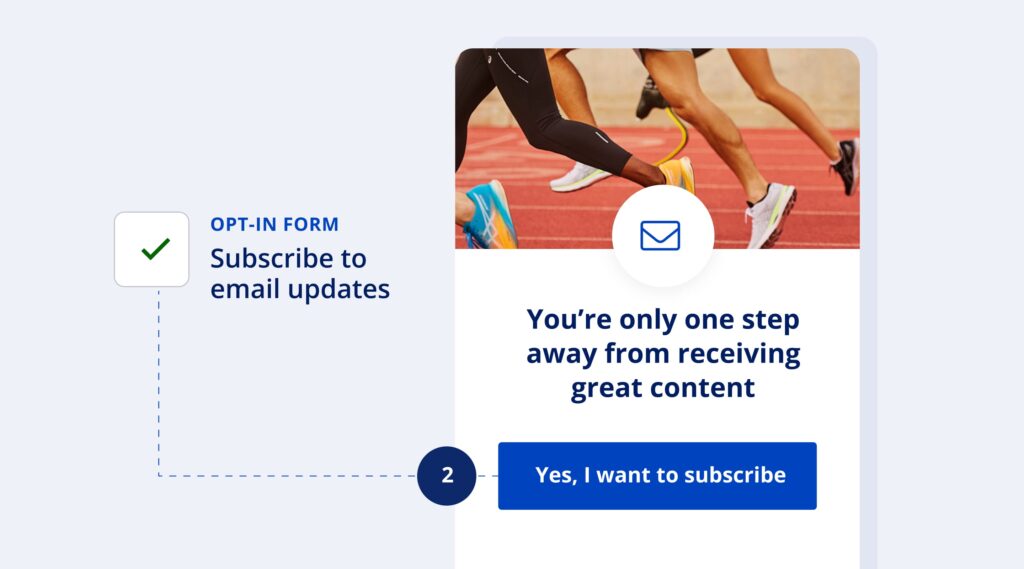
It’s safest to obtain explicit consent* from your participants before sending marketing emails to them. This means that, during registration, they have voluntarily checked a box that indicates they are interested in receiving marketing emails.
Even where it is legal to do so, sending marketing emails without explicit consent can lead to an increase in spam complaints from unexpecting recipients. So, ensure your email opt-in process is as clear as possible and consider using a double opt-in method to confirm your subscribers.
*Legal requirements around obtaining explicit consent for email marketing vary depending on location. If you’re unsure of laws in your region, contact a lawyer.2. Segment Your Email List
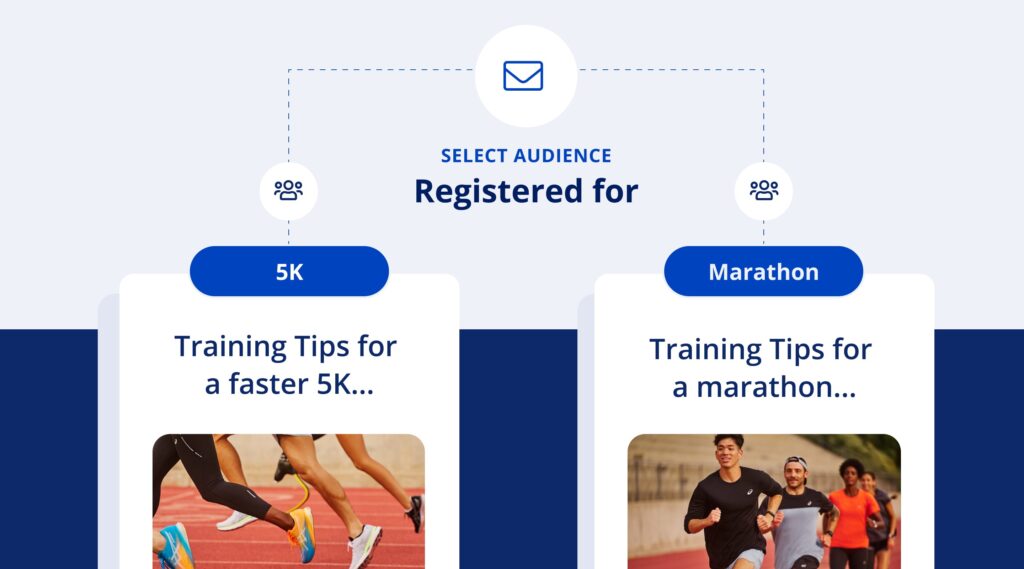
Segment your email list based on participant preferences or registration categories. This allows you to send targeted and relevant information to specific groups, reducing the likelihood of spam complaints while simultaneously increasing your engagement.
If you are organizing multiple race distances during your event, you don’t want your 5k participants to be receiving information they’re not interested in about your marathon.
3. Find the Appropriate Cadence for Emails
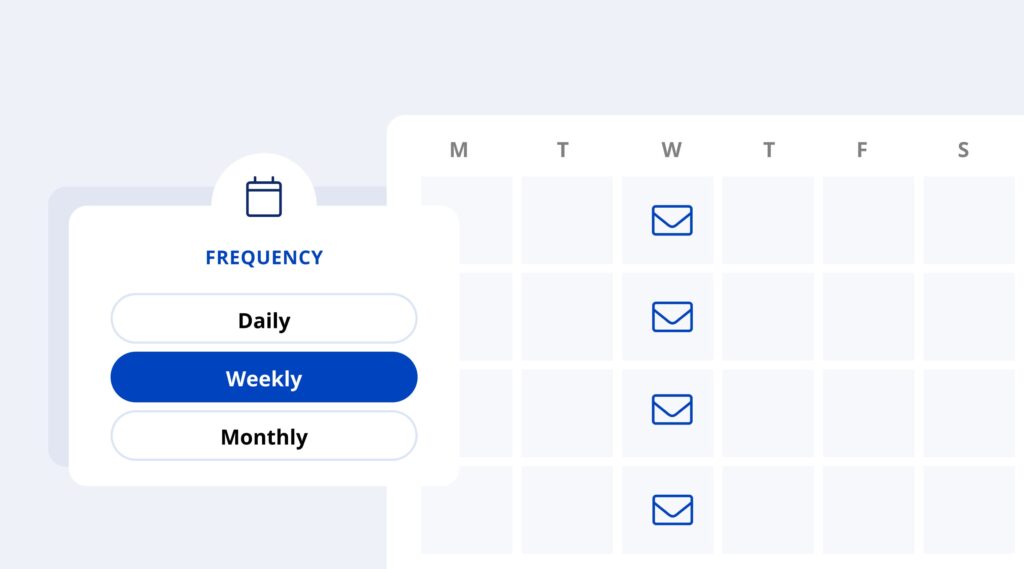
Finding the right email schedule is a delicate balance. Sending your participants too many or too few emails can result in unsubscribes or spam complaints.
To avoid sending too many emails, consider the expectations you’ve set for your subscribers. Have you made a promise of daily, weekly or monthly emails? If you have, don’t over-deliver on that promise. Taking advantage of your participants’ trust could come back to bite you.
On the flip side, sending too few emails is also dangerous. If you go weeks (or, even worse, months) without sending an email and then make an unannounced drop-in on your subscribers’ inbox, it might backfire.
How can you find the perfect balance? Send recurring email content outside of standard event reminders that your participants expect and value. For example, create an event newsletter that you deliver to inboxes at a regular interval.
4. Send Out Targeted Reminders
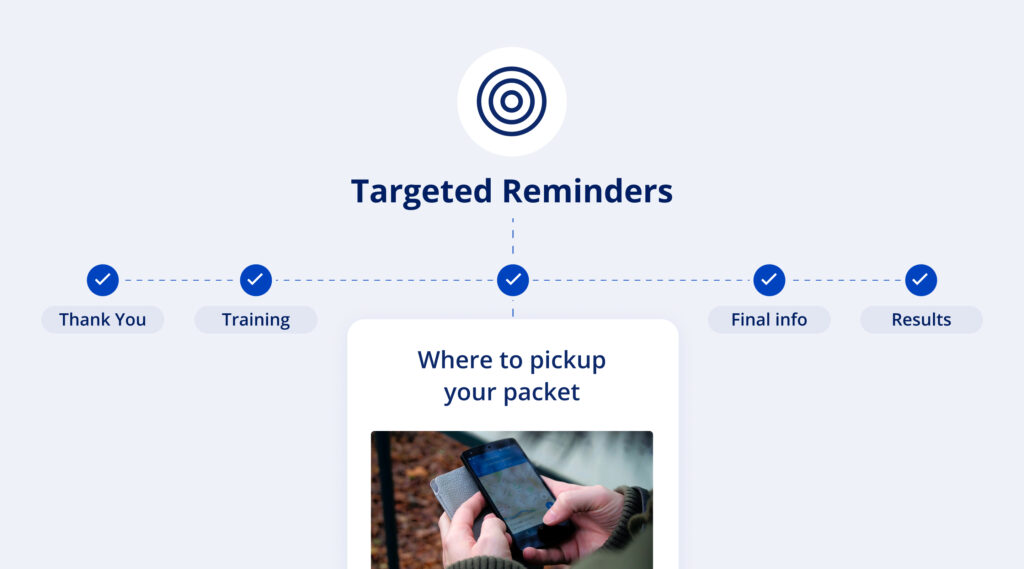
If you’re an experienced event organizer, this is commonplace. Reminding your participants of important event dates and details is an essential part of organizing an endurance event.
Sending targeted reminders like race day logistics, packet pickup information and any last-minute updates is not only helpful for participants, but it also helps to reduce spam complaints.
Event reminders help you maintain a consistent email schedule and deliver important content to your participants’ inboxes so your emails are both familiar and valuable.
5. Avoid Looking “Spammy”
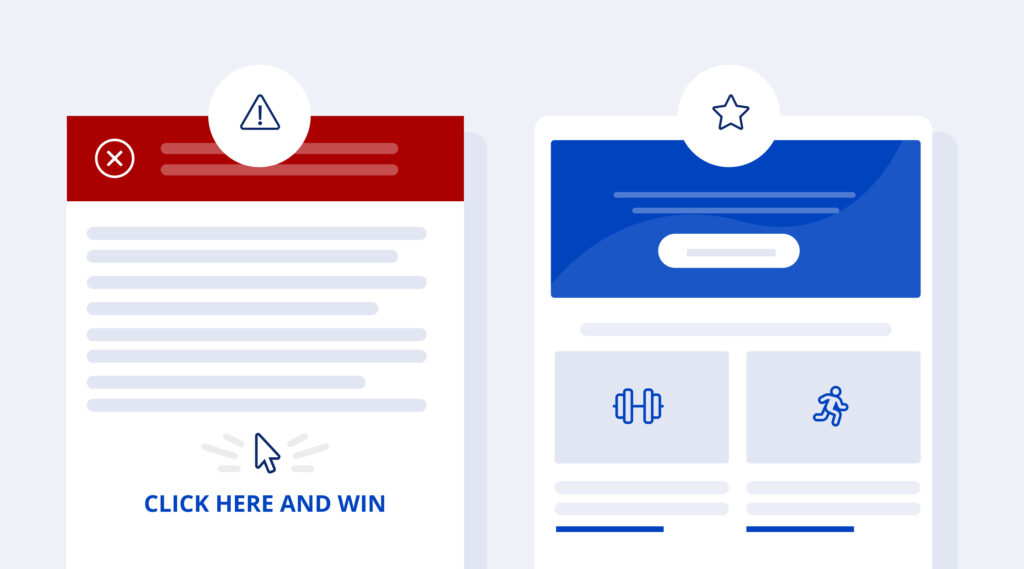
This may seem like a no-brainer but a simple misstep on one or two emails could lead to multiple spam complaints.
What makes an email look like spam? Usually, it’s poorly designed, includes spelling and grammar mistakes, doesn’t load properly, or unrealistic promises or scare tactics to grab your attention.
Here are four ways to avoid sending spammy-looking emails:
- Use a professionally designed email template that is optimized for a mobile experience.
- Always proofread (then do it again for good measure) and preview your emails to ensure you haven’t made an error that can be misinterpreted as spam.
- Follow best practices for writing email subject lines to avoid making a bad first impression. Read this article for helpful email subject line tips and examples.
- Remember to keep your transactional emails and marketing emails identifiably separate so your participants don’t feel that you’re always trying to sell them something.
6. Personalize Your Emails
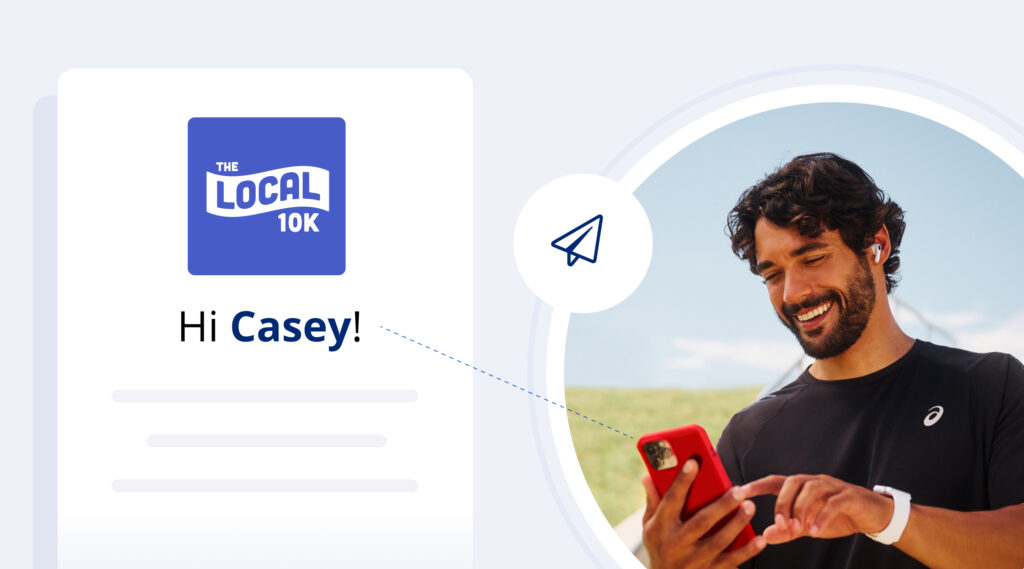
The benefit of personalized emails is simple: participants are more likely to engage with tailored content. That means your participants will be excited to receive your emails rather than be suspicious of spam.
Use participants’ names and personalize content based on their previous engagement or registration details. Personalization helps create a more individualized experience.
7. Deliver Valuable and Relevant Content
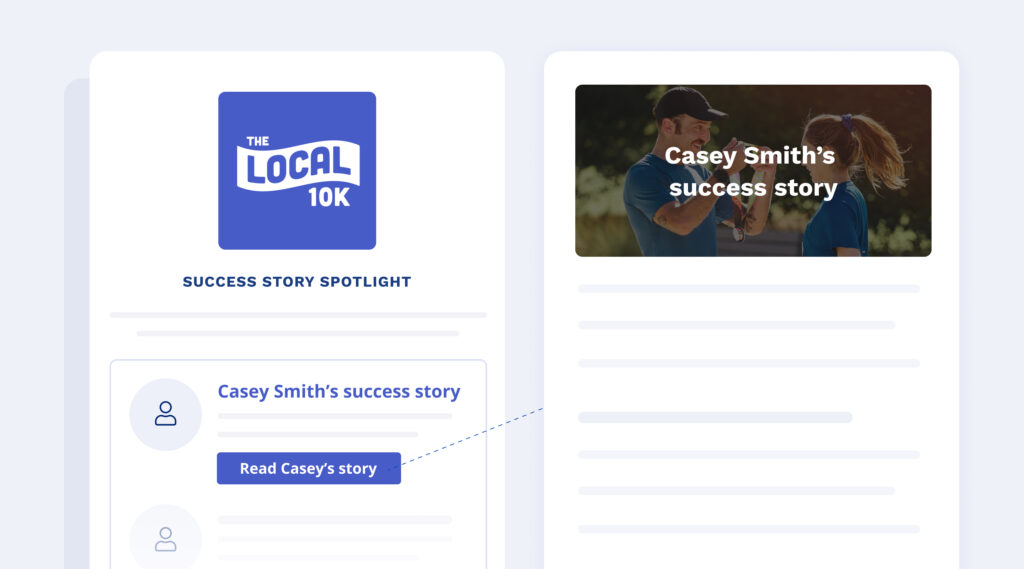
Make sure the content of your emails aligns with the interests of your participants. Create emails with valuable and relevant information about your event, including event details, important dates, training tips, and any updates.
Include interactive elements like polls, surveys, or calls to action to encourage participant engagement. Share success stories, testimonials, or photos from previous events.
Compelling content can build excitement, trust among participants and a sense of community around your event.
8. Use a Recognizable Sender Name and Email Address
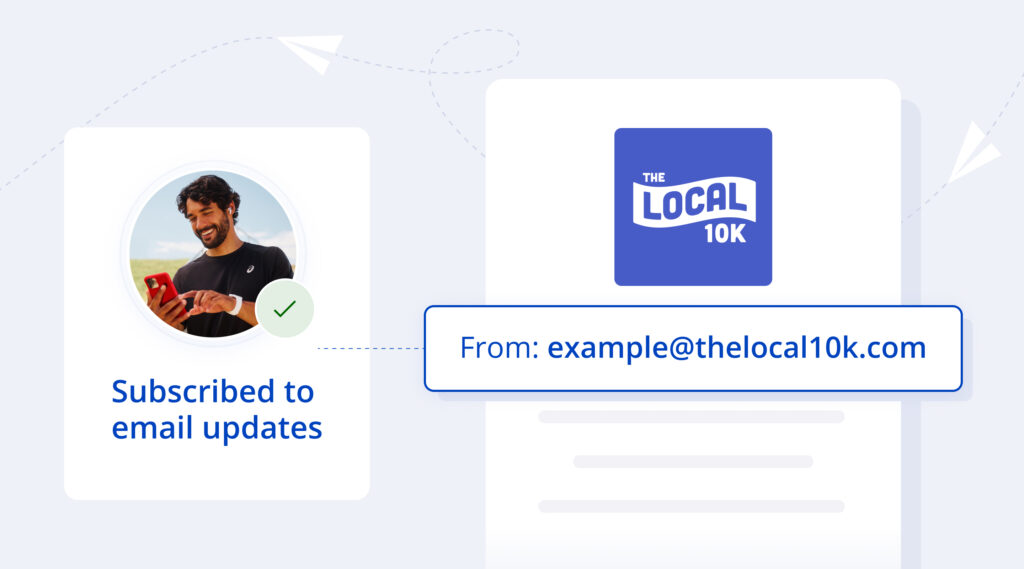
When an email lands in your inbox from an unfamiliar sender it immediately raises red flags. Ensuring that you’re using a sender name and email address that participants can easily recognize will help you avoid that.
When your participants sign up for your event or subscribe to your newsletter, they expect to see your event or organization name as the sender. If they don’t, there’s a higher chance they’ll mark your email as spam.
9. Monitor and Analyze Email Metrics
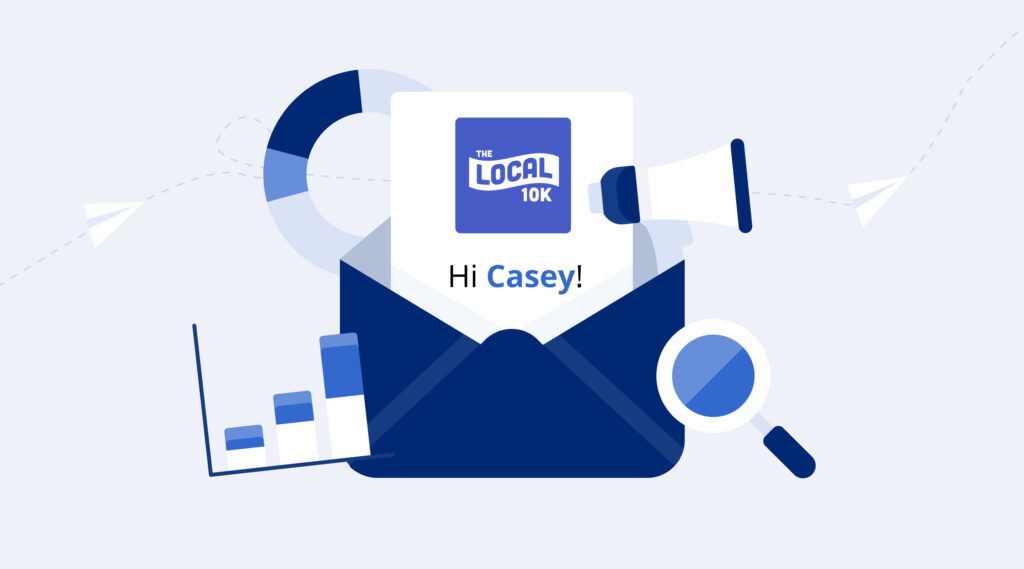
Email platforms generally report spam complaints as part of performance metrics updates. You can use these updates to quickly take the steps necessary to address your email issues.
Also, make sure you regularly monitor email engagement metrics like open rates and click-through rates. You can use this data to refine your email strategy and address any potential issues promptly.
High engagement suggests that your content is well-received by your participants, while low engagement could be a sign that you need to adjust.
Also, keep an eye on your unsubscribe rate. If your unsubscribe rate starts to get high (between 0.3%–0.5%), it’s typically a sign that your emails could produce spam complaints.
Conclusion
By following these tips and maintaining your focus on providing value and relevance to your event’s participants, you can help ensure that your email campaign is well-received and doesn’t result in a high spam complaint rate.
You can make sure you’re maintaining your compliance with bulk sender requirements by regularly assessing and adjusting your email strategy based on participant feedback, engagement metrics and changes in industry standards.

What’s new at Race Roster?
Visit our what’s new page for the most noteworthy Race Roster updates!